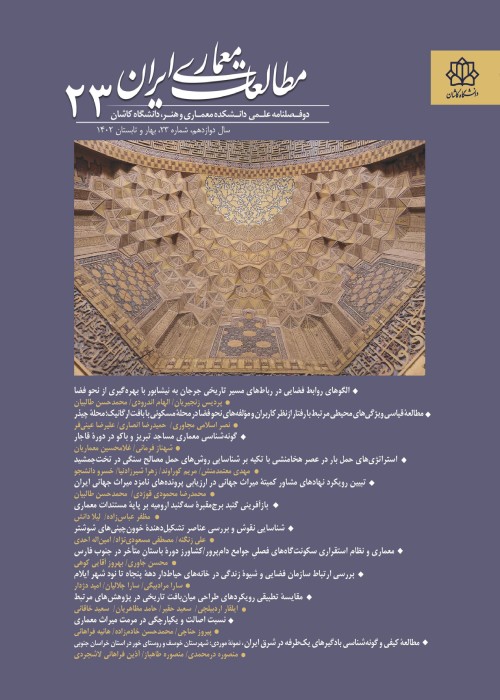The Evolution of the Faryumad Mosque emphasizing Ilkhanid-era Interventions
The Jami Mosque of Faryumad is a two-iwan mosque in Greater Khorasan, which is located in the Jovein district, at the center of the historical village of Faryumad. Although existing studies regarding the building emphasize the existence of multiple periods of construction unanimously, there are various opinions about the date of construction, development of the building, and patrons and artisans involved in the construction It is certain, however, that there were periods of physical modifications of the original mosque and other transformations in later periods due to severe earthquakes in the region.The present study aims to investigate the date of construction of the original mosque, the history of periodic additions and physical developments, and the persons who were involved in the construction of the mosque.The main research strategy is using the descriptive-analytical approach. The researchers performed accurate field studies, comprehensive documentation of the building, follow-up studies, laboratory studies, and reviewed and analyzed existing and historical documents.According to the findings, although existing decorations reflect the Il-khanid style (fourteenth century AH), the original mosque is assumed to have been built in the Seljuk period (twelfth century AH) or earlier. Based on evidence, the original mosque had a single iwan which was destroyed by earthquakes.During the Il-khanid period, with the advent of the powerful minister Ala‘ ad-Din Mohammad Faryumadi and because of his attention to his hometown, the town gained more credibility and reflected the new minister’s glory and power. During his ministry (716-736 AH), in addition to the construction of the Shahrestan mansion (residential palace), a hospital, and a library in his hometown, he became the financial sponsor of the ambitious renovation of the old mosque. According to the inscription at the top of the magnificent mihrab on the south iwan, ‘Ali ibn Mohammad al-Mahmoud al-Jami al-Shahrestani was in charge of the restoration of the mosque.After the damages caused by an earthquake, during the interventions of the Il-khanid period, the south iwan was reconstructed and the north iwan was built for the first time, and the intact parts were preserved. Also, with the formation of the three-bay arches on the west and east sides of the courtyard, the physical structure of the building was completed and the external and internal surfaces of walls were covered with molded brickwork and delicate gypsum decorations.
- حق عضویت دریافتی صرف حمایت از نشریات عضو و نگهداری، تکمیل و توسعه مگیران میشود.
- پرداخت حق اشتراک و دانلود مقالات اجازه بازنشر آن در سایر رسانههای چاپی و دیجیتال را به کاربر نمیدهد.



